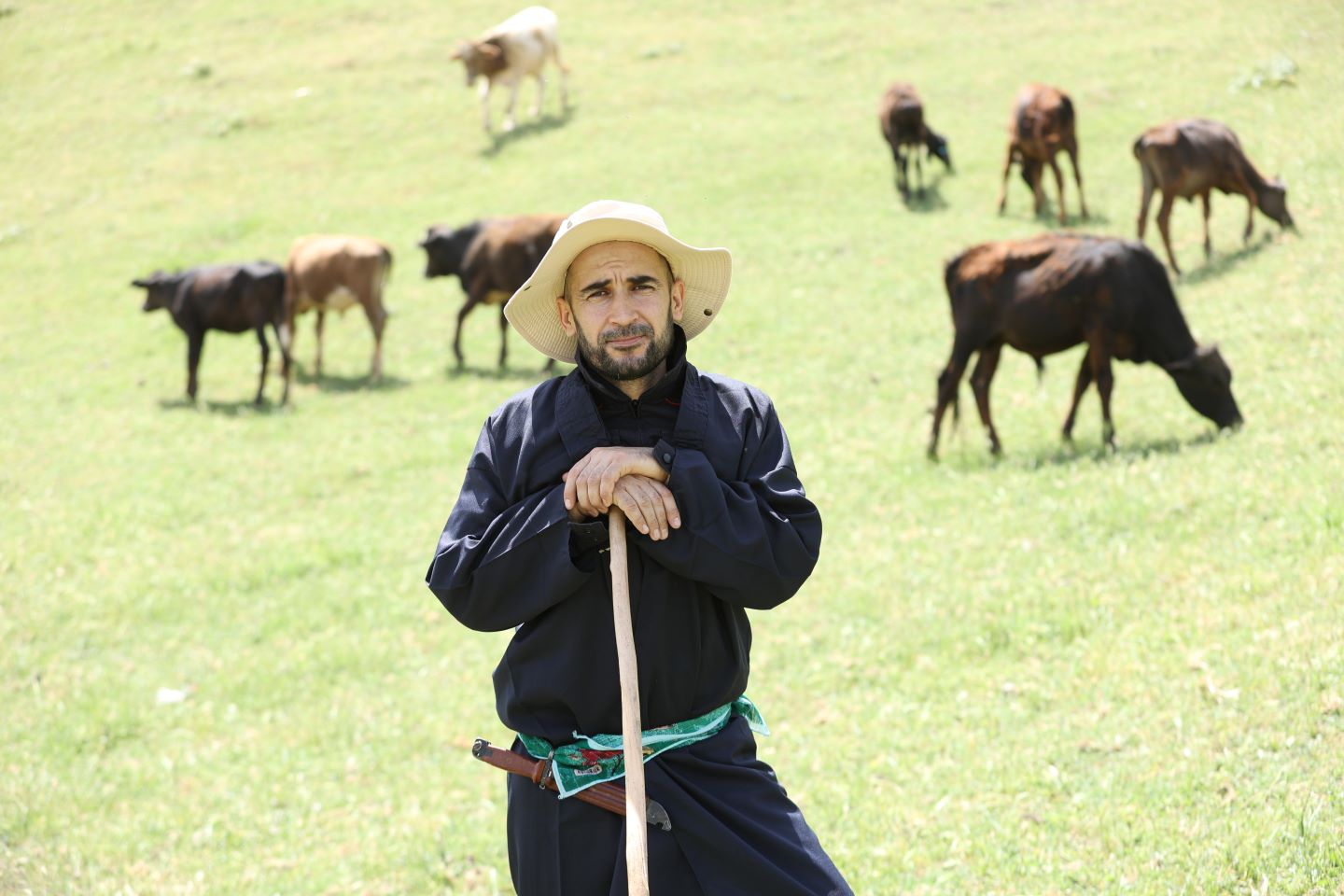Five ways IFAD is making livestock more climate friendly
IFAD Asset Request Portlet
Asset Publisher
Five ways IFAD is making livestock more climate friendly
Estimated reading time: 4 minutes
As our planet warms, animal husbandry is often portrayed as the culprit. And while livestock value chains do contribute to 14.5 per cent of global greenhouse gas emissions, getting rid of livestock is not the solution. It’s much more nuanced than that.
Countless rural people depend on their animals for livelihoods, nutrition and traditional ways of life.
Small-scale herders can have lower emissions and are often part of a mosaic of farming practices that conserve land, water and biodiversity. They can make more efficient use of resources through practices like circular farming and agroforestry.
Livestock is not always the problem. Instead, supporting small-scale farmers to become even greener can strengthen food systems, preserve livelihoods – and still be good for the planet.
1. Happy, healthy animals produce more

Healthy animals that are well adapted to local conditions produce more and better-quality milk, meat, eggs and wool. This way farmers can keep smaller herds and flocks, reducing the overall environmental impacts of livestock.
IFAD supports farmers to breed more productive animals that can adapt to their local environment. In Bolivia, crossing native breeds with improved ones helps llama farmers produce more meat and wool and increase their incomes.
Meanwhile, through better access to veterinary services and vaccination, animals are kept healthy and producing well. In Kyrgyzstan, for example, vets on motorbikes bring animal health care to remote rural locations. This contributes to increase meat and milk production by 4 per cent, while cutting greenhouse gas emissions by 17 per cent.
2. Better grazing practices for healthier rangelands

Many rangeland ecosystems rely on grazing animals to flourish. Animals disperse seeds, deposit manure and trim grasses so that diverse plants and insects can grow. Yet pastures must be managed carefully so they aren’t harmed by overgrazing.
To protect these vital ecosystems, IFAD helps herders restore pastures, protect water resources and prevent erosion.
Pasture resting, roads to reach remote grazing land and managing herd sizes all reduce the load on land, letting it regenerate. In Tajikistan, the IFAD-supported LPDP promotes rotational grazing which gives plants a chance to grow deep roots and sequester more carbon.
3. Use the right animal inputs….

Feeding livestock on crop residues and by-products, like rice stalks or bran, reduces waste and keeps agricultural land for producing food for people rather than animals, limiting the impacts of food production.
High-quality and hardy maize produced locally in Lesotho through the ROLL project means herders needn’t rely on imported soya. This and other interventions under the ROLL project could reduce emissions by 7 per cent if used across the livestock sector, while increasing protein production.
4. ... And use animal outputs right

Animal manure returns nutrients and water to the soil, reducing reliance on synthetic fertilizers.
In Burkina Faso and Niger, IFAD-supported farmers use indigenous techniques, like zai which are small pits filled with organic matter, to collect rainwater, attract insects that condition the soil and make the land fertile again.
Manure can also be used to produce biogas, which rural communities can use for energy and is much less polluting than burning wood and charcoal. With IFAD support, farmers in Kenya and Rwanda use innovative flexi-biogas digesters to do this.
5. Livestock should be part of national solutions in the fight against climate change

IFAD is working with 15 countries that have signed the Global Methane Pledge to integrate methane reduction into their national commitments to tackle climate change.
This entails calculating how livestock contributes to climate change and modelling emissions scenarios using livestock-specific tools like GLEAM-i. Policymakers can use the findings to apply for climate finance and design green measures that work for local farmers.
In Kyrgyzstan, FAO and IFAD have worked with the government to include the outcomes of a GLEAM-i assessment in the country’s Nationally Determined Contributions. Similar assessments are now being carried out in Georgia with the DiMMA project.
In Rwanda and Tanzania, greenhouse gas assessments of the IFAD-supported RDDP and C-STDP projects are informing the design of a regional project funded by the Green Climate Fund which will support small-scale dairy farmers to adopt greener measures, such as emissions-reducing productivity-enhancing practices, measures to reuse waste and developing links to global carbon markets.
If appropriately supported, animal husbandry can continue being good for the planet and provide livelihoods for countless vulnerable communities all over the world.
Publication date: 26 July 2023